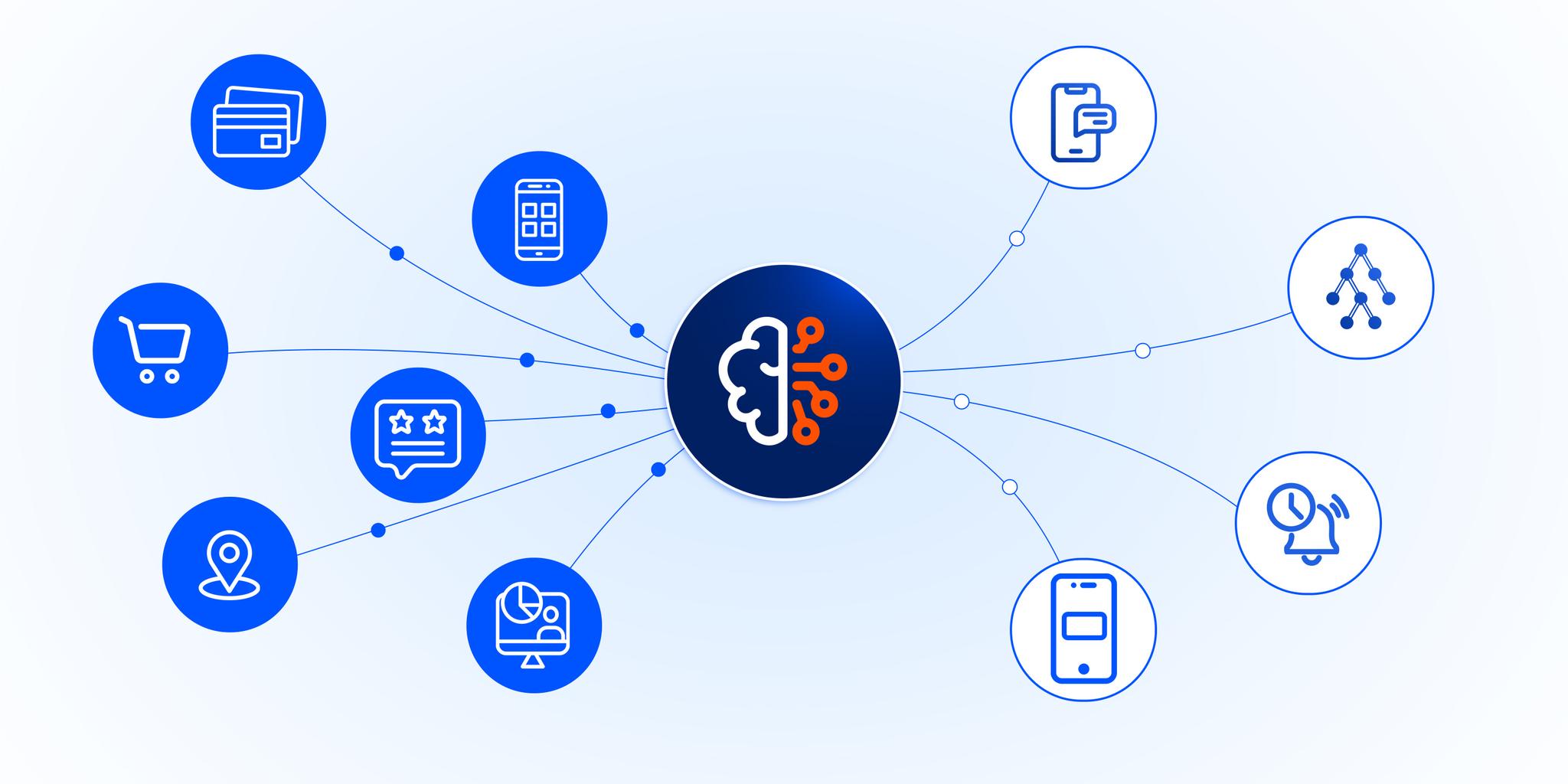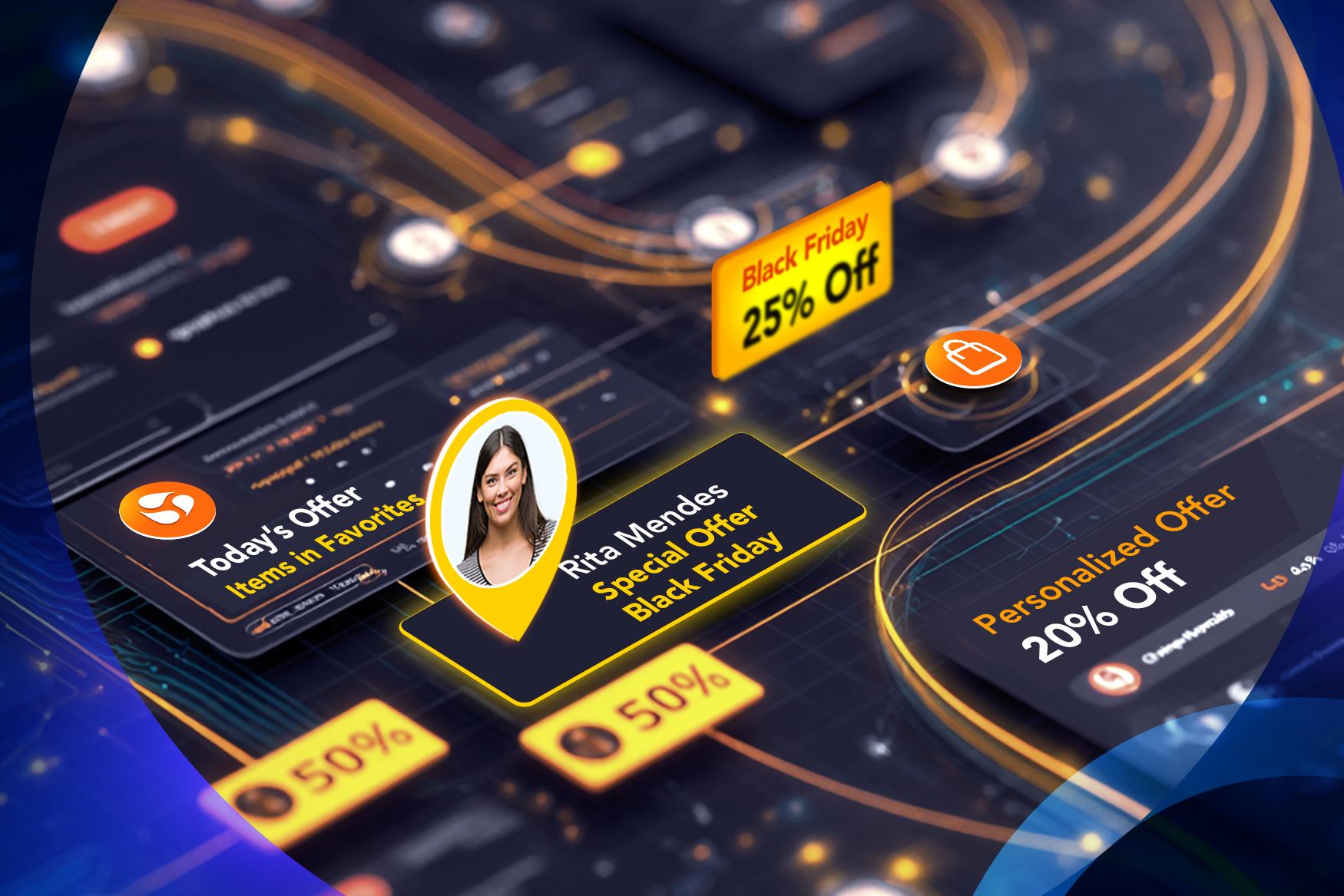August 9, 2024
Personalized Push Notifications: Crafting Resonant Messages
Table of Contents
- What are Personalized Push Notifications?
- The Benefits of Personalizing Push Notifications
- Enhanced Customer Engagement
- Increased Conversion Rates
- Improved Retention & Customer Loyalty
- Reduced Churn Rates
- Heightened Brand Awareness
- How to Build a Personalized Push Notification Strategy
- Segment Audiences
- Contextual Targeting
- Respect User Preferences
- Test & Optimize
- Integrate with Other Marketing Channels
- How Marketing Platforms Can Assist with Personalizing Push Notifications
In today’s digital landscape, customers are bombarded with an overwhelming amount of information daily, making it challenging for businesses to stand out from competitors.
A key marketing strategy that businesses have adopted for cutting through the noise and connecting with their customers is personalized marketing. By embracing personalization, businesses can tailor their products and services for their customers based on their behavior and preferences, ensuring an engaging customer experience.
Among the most effective tools for delivering such personalized experiences is personalized push notifications, which empower marketers to reach their audience with timely and relevant messages that drive user engagement and enhance customer satisfaction.
What Are Personalized Push Notifications?
Push notifications are messages sent by a brand to appear on the screen of a user’s device, such as a smartphone, tablet, or computer. These notifications are attention-grabbing and short to the point in their content and pop up even if the user is not actively utilizing the brand’s mobile app or visiting its website.
Push notification personalization leverages contextual audience segmentation and insights into user behavior, interests, and circumstances to ensure messages are more timely, relevant, and engaging.

The Benefits of Personalizing Push Notifications
Unlike generic push notification campaigns that deliver the same message to a brand’s entire user base, personalized push notifications are tailored specifically for individual users. There are several benefits of personalizing push notifications, which include:
Enhanced Customer Engagement
Personalized notifications contain offers, promotions, product recommendations, or information that are more aligned with the customer’s interests. This improves the likelihood that the customer will open and interact with the notification, leading to increased click-through rates, open rates, and overall customer engagement.
Increased Conversion Rates
By delivering push notifications that are relevant and timely for the customer’s unique circumstances, brands can drive higher conversion rates. For example, brands can send push notifications to customers with abandoned carts, encouraging them to complete their purchases with a rewarding incentive.
Improved Retention & Customer Loyalty
Push notifications that contain personalized content can address individuals’ specific needs at just the right moment, leading to improved customer satisfaction. Customers who feel their preferences and interests are understood and valued by a brand are much more likely to remain loyal to it.
Reduced Churn Rates
When customers receive personalized messaging during moments that matter to them instead of generic campaigns at irrelevant times, they’re less likely to experience notification fatigue. This lowers the chance of them unsubscribing from the brand’s communications or abandoning it altogether, leading to reduced churn rates.
Heightened Brand Awareness
Receiving relevant push notifications consistently creates a more positive impression of the brand in the customer’s mind, increasing overall brand awareness and recall. Through personalized messaging, brands not only reinforce their presence but form a stronger connection with their customers, leading to improved customer lifetime value.
Adopting a personalized push notification strategy lays the foundation for brands to form meaningful and long-lasting relationships with their customers.

How to Build a Personalized Push Notification Strategy
In order for brands to implement a successful personalized push notification strategy, they must follow these 5 steps:
Segment Audiences
Dividing users into smaller groups based on factors such as demographics, interests, purchasing habits, and behaviors allows for push notifications to be more specific and precise for each target audience. Gathering insights into which types of campaigns resonate more with each audience segment will help guide future marketing decisions.
Contextual Targeting
In addition to crafting unique messages for each audience segment, ensuring notifications are contextually relevant to users’ current circumstances is crucial for better customer interactions. Taking into account a user’s recent activity, their location, or dates that are significant to them presents valuable real-time engagement opportunities.
Here is an example for each:
Activity: A user has just completed a transaction. A personalized push notification is sent, thanking the user for their business, and presenting them with a discount for their next purchase.
Location: Upon detecting a user has arrived at the airport, a rideshare app sends them a personalized push notification welcoming them to the city. The notification includes a special promotional offer for transportation to their hotel.
Date: As the deadline for a credit card payment approaches, the bank sends the user a push notification reminding them of the due date. The message includes a direct link to make the payment for the user’s convenience.
Respect User Preferences
Brands should allow users to customize their notification settings, such as subject matter or frequency, and provide them with the option to opt out or unsubscribe from messages. Doing this decreases the risk of users growing frustrated with receiving irrelevant or too many notifications. Allowing for customization also communicates to the users that their input is valued, therefore increasing customer satisfaction and loyalty.
Test & Optimize
It’s important for brands to measure KPIs such as open rates and click-through rates and perform A/B testing to experiment with different targeting strategies. Evaluating the effectiveness of their personalized push notification campaigns through these methods will empower brands to make informed adjustments to their marketing efforts.
Integrate with Other Marketing Channels
Lastly, brands should ensure that their personalized push notifications are consistent with the content on their other marketing channels. This ensures no conflicting or outdated information is relayed to customers, paving the way for a cohesive brand experience and a successful omnichannel marketing strategy.
How Marketing Platforms Can Assist with Personalizing Push Notifications
A marketing platform that can segment audiences, gather insight into user preferences and behaviors and assess campaign performance can be instrumental in achieving these five steps to implement a successful personalized push notification strategy.
evamX is an omnichannel marketing platform with contextual audience segmentation, personalization, and real-time interaction capabilities. It empowers brands to gain valuable insights into their target audience’s interests, preferences, and habits, and seize real-time engagement opportunities for every step of the customer journey.
Brands can leverage personalized push notifications for various purposes, including reminding customers of upcoming events or deadlines, offering promotions to encourage more purchases, and requesting feedback through surveys regarding recent transactions. With EVAM’s AI-powered capabilities, brands can effortlessly design and preview personalized push notification messages for both desktop and mobile devices.
You may be interested
Join the Evam Community
Subscribe to receive the latest insights, news, and updates straight to your inbox.








